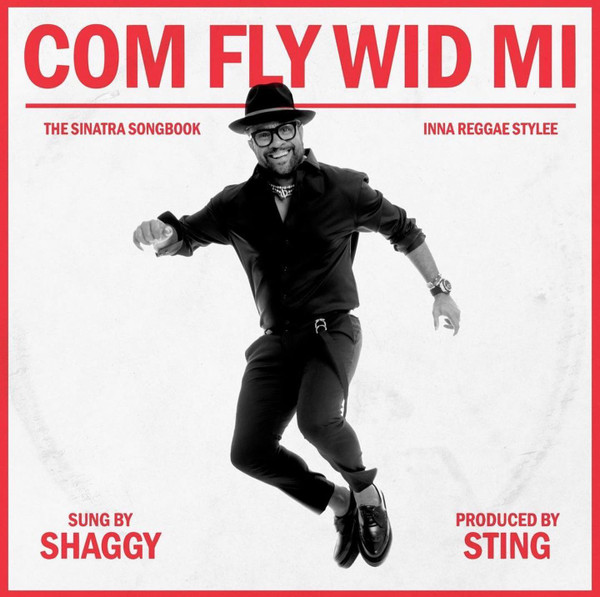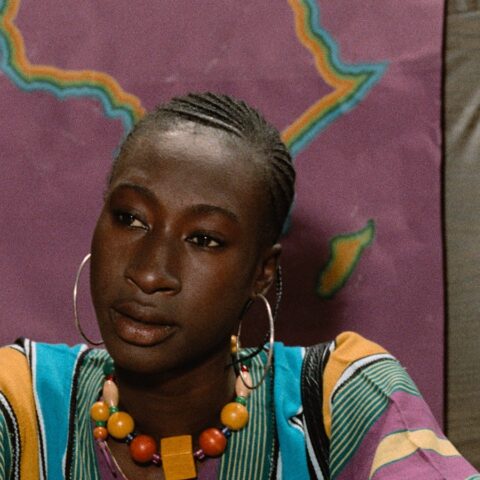By Mark Anthony Neal | @NewBlackMan |with thanks to NewBlackMan (in Exile)
Sunday, July 9, 2023.
For the better part of the last two decades of his life and career, Marvin Gaye was obsessed with a collection of songs, largely associated with Frank Sinatra. Gaye is remembered as the Prince of Motown, one of the most successful male solo artists of the 1960s, and whose albums What’s Going On (1971) and Let’s Get it On (1973) set new standards for the themes and sonic qualities for Soul Music in the 1970s. In contrast to this well-known version of the artist, Gaye secretly toiled with songs, arranged by Bobby Scott just for Gaye, that he hoped would capture the gravitas Sinatra’s In the Wee Small Hours (1955). The latter was an album of torch songs, arranged for Sinatra by Nelson Riddle, that marked Sinatra’s maturation as a “serious” artist. Two new albums recall the era when such torch songs dominated the pop charts – Shaggy’s Grammy nominated tribute to Sinatra, Com Fly Wid Mi and V. Shayne Frederick’s The King Suite, which offers original interpretations of the music of Nat King Cole.
In the Wee Small Hours was Sinatra’s break-up tome to Hollywood actress Ava Gardner, and for some critics it was ground-zero for a budding introspection among male pop singers. As music critic Stephen Holden writes, “Sinatra gave men license to cry without shame. Sanctioned by a tough guy who consorted with mobsters, behavior once synonymous with cowardice and weakness became noble suffering.” Matt Micucci adds, “All of its tracks are introspective Great American Songbook compositions dealing with lost love, failed relationships, depression and loneliness.” In the Wee Small Hours may have been the critical apex of Sinatra’s music career, though he continued to make very popular and even iconic music, largely tethered to his status as a Hollywood star.
Tellingly, nothing from In the Wee Small Hours appears on Shaggy’s Com Fly Wid Mi – an on-the-nose patois translation of “Come Fly with Me.” There is no small irony that Com Fly Wid Mi is produced by Sting – who also duets on two tracks – an artist whose rise to pop stardom was largely premised on the appropriation of Reggae music (albeit with a New Wave vibe). Indeed, Shaggy is a willing co-conspirator here, saddling a version of the American Songbook with a Reggae swagger, that I would argue does little for either the musical genre (or the attendant culture) or Sinatra’s legacy.
Shaggy’s talk-singling style has sustained his popularity largely via novelty party songs like “Boombastic” (1995) and “It Wasn’t Me”; that said, Com Fly Wid Mi is Shaggy’s eighth Grammy nod (he’s won twice). If Com Fly Wid Mi devolves into kitsch, it is the by-product of an uninspired, or even lazy, attempt to reimagine Sinatra with material that is so familiar. The songs are largely drawn from Sinatra’s catalog at Capital Records and Reprise, the label he founded in 1960 in order to have more artistic freedom. That these sounds – and indeed, Sinatra’s brand of American masculinity – were part of the United States’ cultural exports to the world in the 1950s and 1960s might explain why Shaggy might have an affinity for those songs.
Shaggy opens with “That’s Life”, easily among Sinatra’s most well-known and commercially successful recordings, and for the most part it works; it would have been cute as a one-off, something that could have appeared on a film soundtrack. In that same vein, Shaggy’s take on “Fly Me to the Moon” – originally featured on Sinatra and Count Basie’s Quincy Jones produced It Might as Well Be Swing (1964) – is also a pleasing if unforgettable rendering of a song that has been a favorite among hotel bar jazz singers. And therein lies the limits of Com Fly Wid Mi; it comes off like the ambient sounds of the dinner hour at a three-star restaurant. If the Reggae/Sinatra mash was an attempt at some sonic wit, it falls short. The clear standout on Com Fly Wid Mi is “Angel Eyes”, an album track from Frank Sinatra Sings for Only the Lonely (1958), the sibling to In the Wee Small Hours.
Frank Sinatra and Nat King Cole were labelmates at Capitol Records throughout the 1950s, and though racism kept Cole from ever having the kind of multiplatform breakthrough that Sinatra experienced (Cole’s weekly variety show was cancelled because of racist programmers and advertisers), as musical artists they were very much peers. Two of Cole’s most well-known and successful singles, “Mona Lisa” and “Unforgettable” were also arranged by Nelson Riddle. Arguably, Cole’s version of “The Christmas Song” is more popular than any song in Sinatra’s catalog.
Even as Marvin Gaye struggled with those Sinatra-like torch songs, he recorded an album-length tribute to Nat King Cole for Motown in 1965, shortly after Cole’s death at age 45. None of the tracks on Gaye’s tribute rate more than a passing acknowledgment of what Cole meant to the Culture at that time; he was the template for Black crossover in the 1950s and beyond. A Tribute to the Great Nat “King” Cole album was squeezed out between the two albums, How Sweet It Is to Be Loved (1965) and Moods of Marvin Gaye (1966) that made Gaye a legitimate hitmaker. Two of the tracks on Gaye’s tribute album, “Sweet Lorraine” and “Nature Boy” appear on V. Shayne Frederick’s The King Suite, his fine and imaginative meditation on Nat King Cole.
Frederick is a Philadelphia-based pianist and vocalist, who frequent collaborator Guthrie Ramsey, Jr., says “has built a reputation on Philadelphia’s vibrant music scene as a creative force. His electrifying live shows are memorable events, brimming with good times, and most of all, consistently high examples of his crafty musicianship. His thoughtful body of recorded work offers the same.” Frederick’s previous outings, Blacklight (2020), Evergreen (2019) and Lovesome (2019) are every bit as eclectic as this Cole tribute. Throughout the seven-song project, Frederick presents a Nat King Cole, off-the-beaten path, with an eye on considering Cole as a transnational figure. Ramsey, the author of the recent Who Hears Here? On Black Music, Pasts and Present, notes of The King Suite, “Precious, eclectic arrangements situate these songs in sound cultures from throughout the African Diaspora.”
Important to this labor is recovering the music of Cole with the King Cole Trio, a largely instrumental outfit which featured Cole on piano and vocals, Oscar Moore on guitar, and Johnny Miller on bass. The opening track on The King Suite, “I’m an Errand Boy for Rhythm”, was recorded and performed in the 1940s, though not released until 1954 on 10th Anniversary, a compilation album that celebrated the beginning of Cole’s career with Capitol Records, with the release of the iconic “Straighten Up and Fly Right”. The production on Frederick’s version of this obscure Cole track seamlessly updates the song for contemporary ears, without trading on any of the complexities of the original arrangement.
In the mid-to-late 1940, Nat King Cole was still very much regarded as a jazz artist, who happened to sing (think George Benson in the late 1960s), yet it was a song that Cole biographer Will Friedwald describes as an “afterthought” that signaled the demise of Cole’s Jazz trio and his ascendence as a popular crooner. “Nature Boy” was a bonus recording done during a session that produced King Cole for Kids (1947), and when it became one of the top singles of 1947, Cole was on his path to mainstream stardom. Whereas Cole’s version is performed as a ballad with strings, Frederick presents this Cole gem in a traditional jazz setting, including a stellar horn arrangement. Befitting the archival work that Frederick does throughout this project, he also pulls in “I Wanna Be a Friend of Yours” from that children’s album recorded in 1947.
For “Sweet Lorraine”, Frederick’s version is closer to the version that Cole records with a trio in 1957 for After Midnight, as opposed to earlier versions the Nat Cole Trio did for Decca and Capitol in the early 1940s. And like so many of Frederick’s dives into the Nat King Cole catalog – “Quizás, Quizás, Quizás (Perhaps, Perhaps, Perhaps)” from Cole Español (1957) is another standout – there is a haunting quality to his vocal prowess. The spirit of Cole is no doubt present, but as Ramsey attests, Frederick’s “diction, control, and elocution harken back to the 1940s and 50s polished pop work of Billy Eckstine and Sarah Vaughn.”
The King Suite comes five years after Gregory Porter’s Nat King Cole & Me (2017), and Porter has shrewdly positioned himself as the artistic heir to Cole, by mainly, playing it straight. The genius of V. Shayne Frederick’s The King’s Suite is that it remembers a moment in Cole’s career when he still had the freedom to swing as it were. Much like Louis Armstrong, the aforementioned George Benson, and I might add Nina Simone here, Cole came to mainstream prominence largely in the context of his vocal performances, often at the expense of his genius as instrumentalists; The King Suite shows that Cole’s talents as vocalist and pianist were always in sync.
Ramsey says of Frederick, “It seems to me his music is always about community work—linking the past, present, and future,” and therein lies the difference between Shaggy’s Com Fly Wid Mi and The King Suite: Shaggy has offered a product that the market will love – hence the Grammy nod – Frederick has a loftier aim, in doing it for the Culture.
***
Mark Anthony Neal is the James B. Duke Professor of African & African American Studies at Duke University. He is the author of a half-dozen books including the recent Black Ephemera: The Crisis and Challenge of the Musical Archive (NYU Press) and hosts the video podcast Left of Black, now in its 13th season..
Shaggy’s ‘Com Fly Wid Mi’ Plods, While V. Shayne Fredericks’ ‘The King Suite’ Soars’








Your point of view caught my eye and was very interesting. Thanks. I have a question for you.
I don’t think the title of your article matches the content lol. Just kidding, mainly because I had some doubts after reading the article.